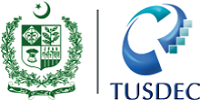An interesting course specially designed for PCB design engineers, hardware/firmware designers, electronic equipment developers, students and researchers. The course will be delivered through a series of lectures, case studies, and hands-on software workshops. Projects include hands on PCB layout/mounting design exercise, 3D design and modeling of an electronic equipment including PCBs & connectors and mobile phone drop impact analysis.
Course Coverage:
- Harnessing basic mechanical engineering principles and techniques into electronic products’ design and analysis process
- Present the basic knowledge at three levels:
- EEE Components
- Printed Circuit Boards (PCBs)
- Assembled Equipment
- Learn PCB layout and designing aspects like critical component placement, mechanical outline control and heat dissipation mechanisms
- Create finite element simulation to study and analyze behavior of electronic equipments and PCBs for thermal, vibration and shock induced loads
- Know-how development about commonly used metallic and non-metallic materials for Printed Circuit Boards (PCBs) and Enclosures
- Introduce best design practices and thumb rules for efficient and robust design
Instructor Profile:
Instructor is foreign qualified with 8 plus years of hands-on work experience in design and development of electronic equipments (Power, RF and Digital) from conception to production for a wide range of applications.
Learning Outcome:
Trainees are expected to learn:
- Methodologies that are essential to design and analyze printed circuit boards (PCBs) and their mounting in different types of enclosures keeping in view volume, mass and operating environmental constraints
- Design verification techniques using analytical methods and creating finite element models to perform structural and thermal analysis of the PCBs and assembled equipments to
- Predict temperature and heat flux distribution on boards and enclosure and identify localized hot-spots
- Identify thermal hardware and heat sink requirements to maintain EEE components and PCBs within operating temperature limits
- Calculate board displacements, natural frequencies, mechanical/thermal stresses and estimate components fatigue life due to shock and vibrations
- Best industry practices for conceptual and detailed designing, thermal management, material selection, and vibration damping to produce efficient and robust designs


